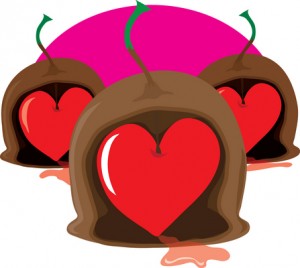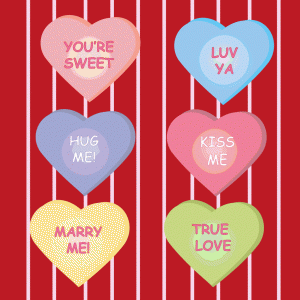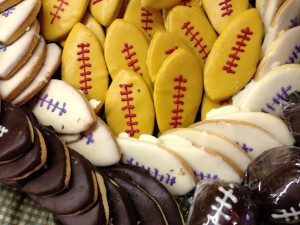1. When Did We Start Exchanging Valentines?
Valentine greetings were popular as far back as the Middle Ages. The first commercial Valentine’s Day cards in the US were created in the 1840s. British Valentine’s Day celebrations started around the 17th century and by the middle of the 18th century all social classes exchanged tokens of affection or handwritten notes. Americans probably began exchanging handmade valentines in the early 1700s and mass-produced valentines in the 1840s.
2. Who was Saint Valentine?
The Catholic Church recognizes at least three different martyred saints named Valentine. All of their stories emphasize Valentine’s sympathetic, heroic, and romantic appeal.
In one, a priest in 3rd century Rome defied Emperor Claudius’ decree outlawing marriage for young men and continued to perform secret marriages — for which he was put to death. Another story suggests that Valentine was killed because he tried to help Christians escape harsh Roman prisons. And in another legend the imprisoned Valentine sent the first “valentine” message, a letter, to his jailor’s daughter signing it “from your Valentine.”
Some people think that Valentine’s Day is celebrated in the middle of February to commemorate Valentine’s death around 270 A.D. Others think the Christian church decided to celebrate Valentine’s feast day in the middle of February in an attempt to “christianize” the pagan Lupercalia, known as the beginning of spring festival.
3. Why Is The Symbol For Valentine’s Day A Red Heart?
No one seems to be really sure why the heart shape symbolizes love, but there’s some speculation that it might have to do with a rare, now extinct North African plant called silphium which was mostly used for seasoning but also had off-label use as a form of birth control. In the 7th century BC the city-state of Cyrene had a lucrative trade in it and minted coins that showed the plant’s seedpod, which looked like the heart shape we know today. The theory goes that’s the reason the heart shape first became associated with sex and then with love.
But the Catholic Church contends that the modern heart shape became symbolic in the 17th century when Saint Margaret Mary Alocoque envisioned it surrounded by thorns. It became known as the Sacred Heart of Jesus and the popularized shape became associated with love and devotion.
There’s also a school of thought that the modern heart shape came from botched attempts to draw an actual human heart, the organ the ancients, including Aristotle, thought contained all human passions. It was described as a three-chambered organ with a rounded top and pointy bottom, which might have been the inspiration for medieval artists to create what we now know as the heart shape.
Red is traditionally associated with the color of blood. Since people once thought that the heart, which pumps blood, was the part of the body that felt love, the red heart (legend says) has become the Valentine symbol.
4. Where Does “Sweets To The Sweet” Come From?
We have Hamlet’s mother, the Queen (via Shakespeare), to thank. The phrase refers to the funeral bouquets of flowers scattered over Ophelia’s grave (Hamlet’s former flame) — but the candy industry uses it to promote Valentine’s Day candy.
5. Who Gets And Gives The Most Stuff On Valentine’s Day?
Valentine’s Day is the fourth in line for holiday candy sales after Halloween, Easter, and Christmas. 52.1% of people buy cards, the most popular Valentine’s Day gift. Women buy about 85% of an estimated one billion Valentine cards that are sent each year.
Around 36 million heart-shaped boxes of chocolate are sold and a survey by the Chocolate Manufacturers Association showed that 50% of women most likely will give chocolate to a guy for Valentine’s Day.
If you’ve ever wondered who gets the most Valentine’s Day candy and gifts, you might be surprised to learn that kids are the winners getting 39% of all Valentine’s Day candy and gifts. They’re followed by wives and mothers at 36%, fathers and husbands at 6%, and grandparents at 3%.
And, not to overlook other members of our households, more than nine million pet owners buy their pets gifts with the average person spending $5.04 on them.




